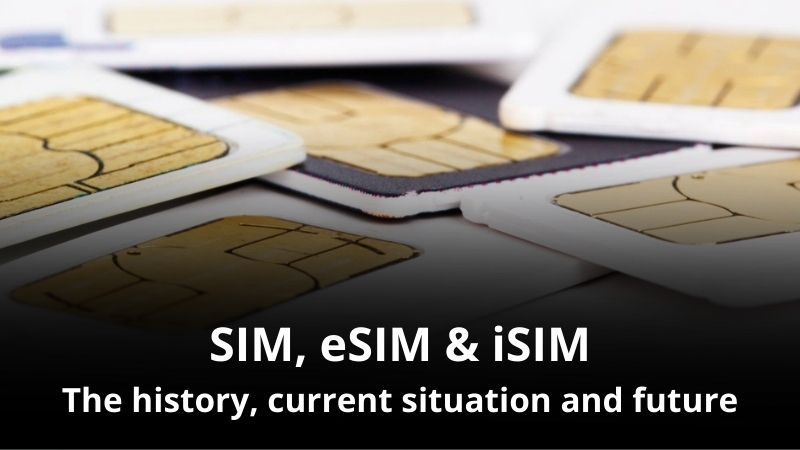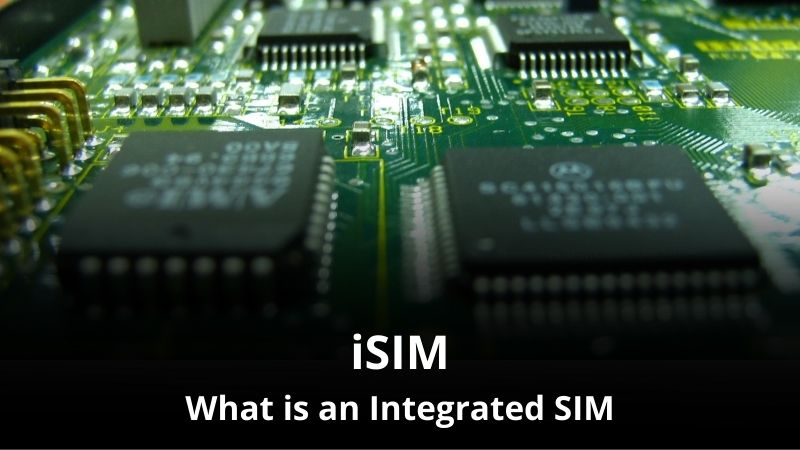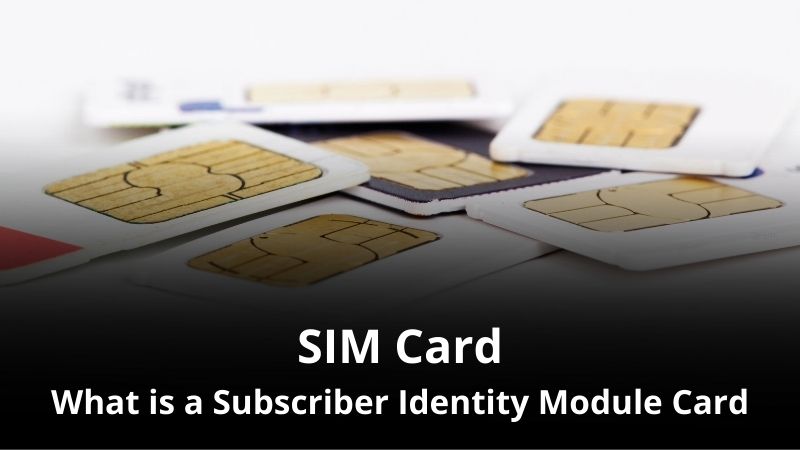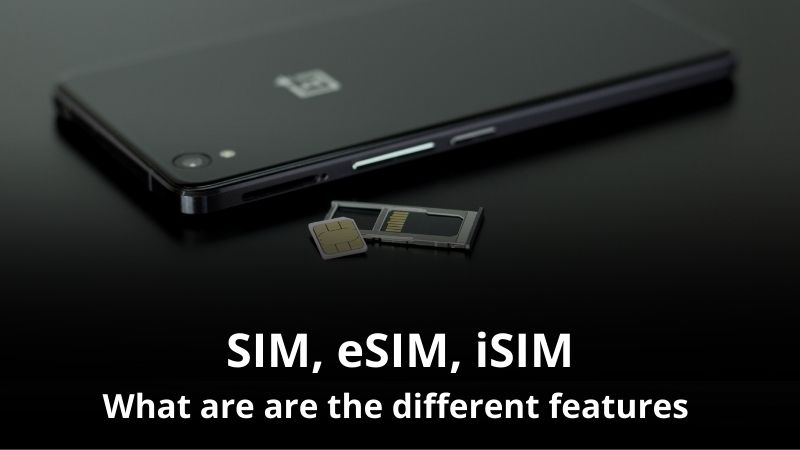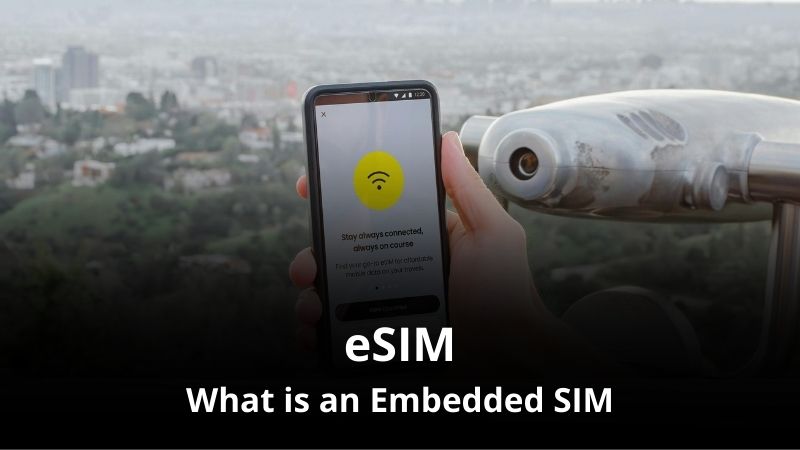The History, Current situation, and Future Outlook of SIM Cards, eSIM & iSIM
The world of mobile communication has undergone a remarkable transformation over the past few decades, let’s look at the History, Current situation, and Future Outlook of SIM Cards, eSIM, and iSIM.
From the early days of clunky mobile devices with big removable SIM cards to today’s sleek smartphones equipped with embedded SIM (eSIM) technology, the evolution has been nothing short of revolutionary. For the different features see here.
In this comprehensive exploration, we will delve into the historical roots. And the current landscape, and future outlook of SIM cards, embedded eSIM, and Integrated SIM (iSIM) technologies. By examining their profound impact on the telecommunications industry and the broader digital landscape.
What is the history, current situation and future of a SIM Card, eSIM & iSIM?
What is the History of SIM, eSIM and iSIM?
What is the history of the SIM Card?

The story of mobile communication begins in the 1980s with the introduction of the first SIM cards. These Subscriber Identity Module cards were designed to store essential subscriber information, ensuring secure authentication, and enabling seamless network connectivity.
Initially, SIM cards were the size of credit cards, a far cry from the miniature versions we are accustomed to today. Over the years, SIM cards evolved through various sizes, such as the standard SIM, micro-SIM, and nano-SIM. Adapting to the shrinking dimensions of mobile devices and available space.
What is the history of eSIM?




In the early 2010s, the emergence of eSIM technology marked a significant leap forward. eSIMs are programmable digital SIM cards embedded directly into devices during manufacturing. This breakthrough eliminated the need for physical SIM cards, allowing for remote provisioning and activation of mobile services.
The GSM Association (GSMA) established global standards for eSIM in 2016, paving the way for widespread adoption in smartphones, tablets, wearables, and Internet of Things (IoT) devices.
What is the history of iSIM?




Integrated SIM (iSIM) technology represents the next frontier. Unlike eSIM, iSIM is integrated at the chipset level during the manufacturing process of the device. This integration provides enhanced stringent security features. It makes it particularly suitable for solutions demanding security measures, such as critical infrastructure, connected cars, and high-security IoT devices.
What is the Current Landscape of SIM, eSIM and iSIM?
What is the current situation of the SIM Card?




Traditional SIM cards continue to be ubiquitous, serving a vast array of mobile devices. Their global standardization ensures interoperability across networks and devices, making them indispensable for both consumers and mobile network operators (MNOs). SIM cards are not just physical entities; they encapsulate a subscriber’s identity, mobile plan details, and cryptographic keys, ensuring secure communication between the device and the network.
However, they produce plastic waste and are not environmentally friendly. Next to plastic waste there are other things which impact the environment such as shipment, packaging, etc.
What is the current situation of eSIM?




eSIM technology has rapidly gained ground, especially in high-end smartphones and IoT devices. The ability to switch carriers without swapping physical cards, coupled with the convenience of remote activation, has made eSIM a preferred choice. eSIM-enabled devices are increasingly common, allowing users to seamlessly connect to different networks and enjoy the benefits of virtual SIM profiles.
The eSIM does not produce any waste plastic and a very environmentally friendly.
What is the current situation of iSIM?




While iSIM is still in its nascent stage, it holds immense promise. Its integration at the chipset level provides an unparalleled level of security, making it ideal for applications where data integrity and confidentiality are paramount. As IoT devices become more sophisticated and security-conscious, iSIM technology is poised to play a pivotal role in ensuring the safety of connected systems.
What is the Future Outlook of SIM, eSIM and iSIM?
What is the future outlook of the SIM Cards?




Traditional SIM cards, while enduring, will likely see a decline in mainstream usage. They will continue to serve specific use cases, particularly in basic phones and in regions where advanced mobile technologies are yet to permeate fully. However, their role will be overshadowed by the rise of eSIM and iSIM technologies.
What is the future outlook of eSIM?




The future of eSIM is exceptionally promising. As more devices embrace eSIM technology, we can expect a surge in connected wearables, smart home devices, and industrial IoT applications. Enhanced by 5G networks, eSIM-enabled devices will revolutionize the way we communicate, collaborate, and innovate. The seamless transition between networks and the ability to manage multiple virtual SIM profiles will become commonplace, empowering users with unprecedented flexibility.
What is the future outlook of iSIM?




iSIM technology is poised for exponential growth, driven by the escalating demand for ultra-secure IoT deployments. Industries such as healthcare, finance, and automotive, where data protection is non-negotiable, will be early adopters of iSIM. Its integration with blockchain technology and artificial intelligence will further fortify its position as the gold standard in secure communication.
What are the Challenges and Considerations of SIM, eSIM and iSIM?
While the future of SIM cards is declining and the future of eSIM, and iSIM seems promising, several challenges must be addressed:
- Interoperability: Ensuring seamless interoperability between different SIM technologies is paramount. Standardization efforts, collaboration between industry players, and regulatory frameworks will be instrumental in achieving this goal.
- Security: With cyber threats becoming increasingly sophisticated, safeguarding eSIM and iSIM technologies against hacking attempts and data breaches is non-negotiable. Continuous advancements in encryption protocols and cybersecurity measures are imperative.
- Regulatory Compliance: The regulatory landscape is evolving, encompassing data privacy laws and telecommunications regulations. Adhering to these standards while fostering innovation will require a delicate balance.
Summary of the History, Current situation, and Future Outlook of SIM Cards, eSIM & iSIM
In the grand tapestry of the digital ecosystem, SIM cards, eSIM, and iSIM are the threads that bind us to seamless connectivity, unparalleled security, and limitless possibilities. As we march into an era dominated by 5G, IoT, and artificial intelligence, these technologies will serve as the foundation upon which the future of communication and innovation is built.
Mobile network operators, device manufacturers, and service providers must collaborate synergistically to harness the full potential of SIM cards, eSIM, and iSIM. Together, they form a symbiotic relationship, enabling the proliferation of connected devices, the creation of intelligent ecosystems, and the realization of a truly interconnected world.
The journey from physical SIM cards to embedded eSIM and iSIM technologies is not merely an evolution; it is a revolution that transcends the boundaries of traditional communication. As we navigate the complexities of the digital frontier, you should embrace these technologies as enablers of progress, catalysts for innovation, and guardians of our connected future. In their seamless integration lies the promise of a world where connectivity knows no bounds, and the possibilities are as vast as the boundless horizons of the digital age.
